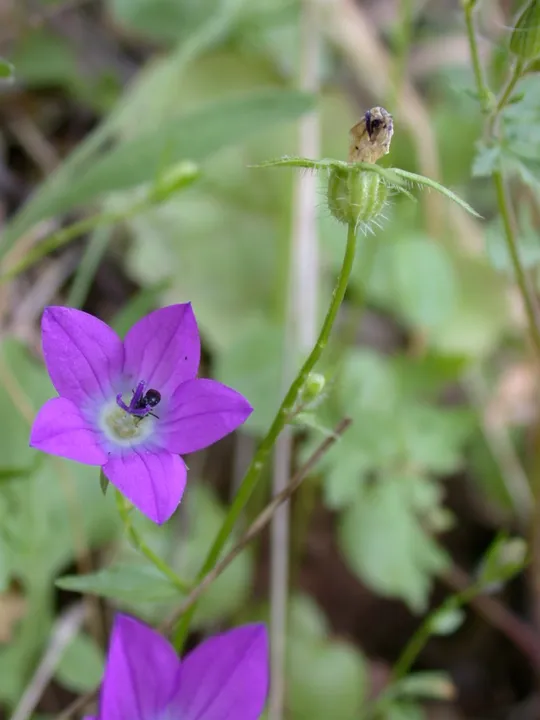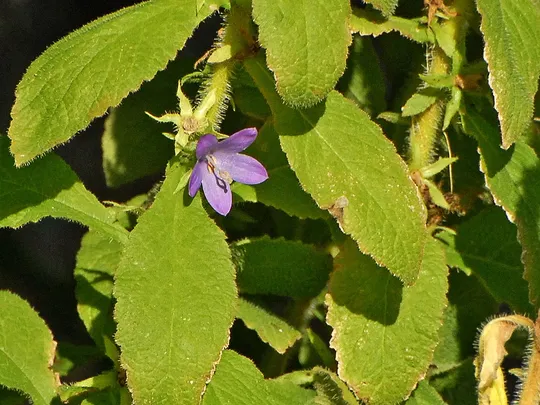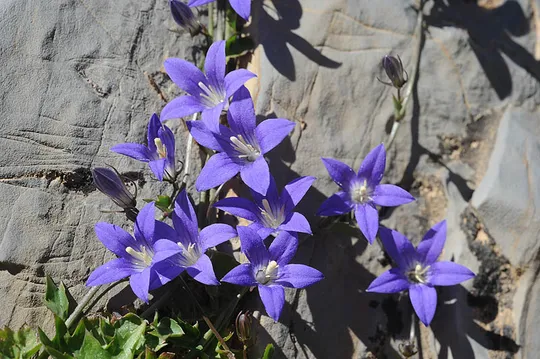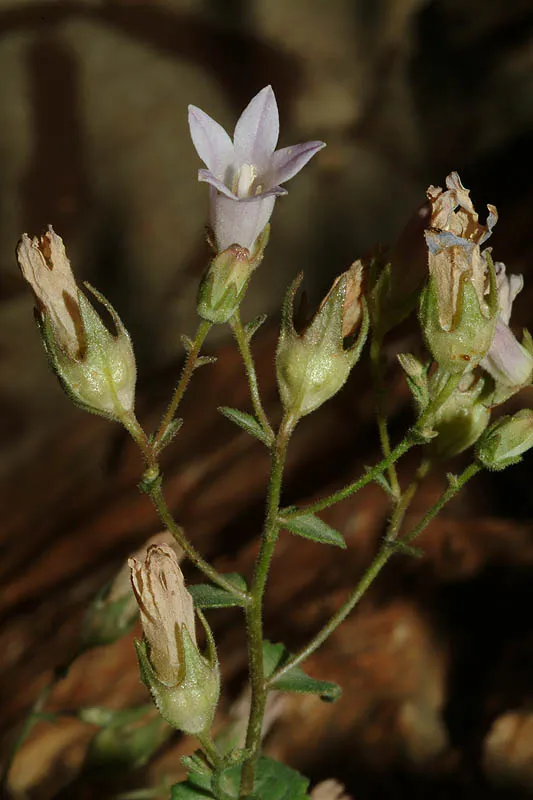Rough-leaved Michauxia
Michauxia campanuloides
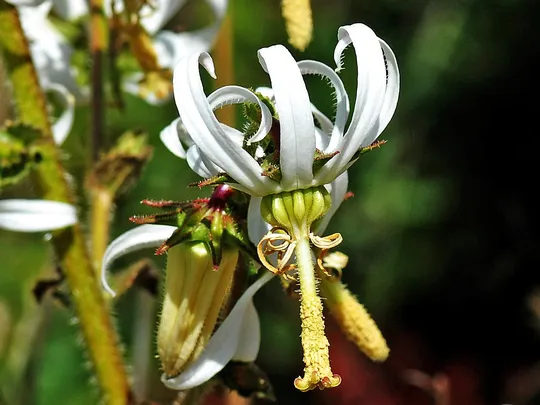
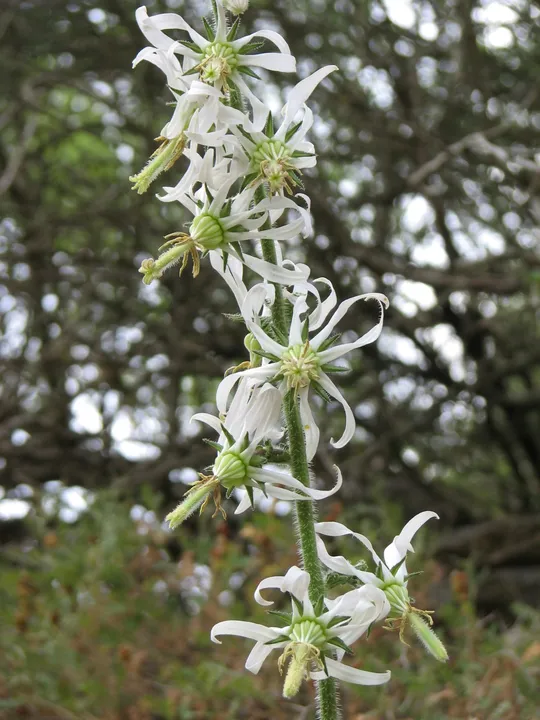
Michauxia campanuloides grows in the
Upper Galilee, in the Lower Galilee, in the Golan, the lower Mediterranean part
of the Hermon and in Samaria. It grows on 61 known sites, but possibly the
total number of sites is 65. Most of the sites (42) are found in the Upper
Galilee in three sections – the Ayun Stream-Ramim Ridge, the Mount Meron block
and the rivers of the western Galilee. In the Lower Galilee, it was found at four
sites in the area of Wadi Tzalmon. Yaakov Shorer found M. campanuloides in 1985 in Wadi
Barta’a in Samaria, as a new species for the region. In the Golan Heights it
was found at a few sites – the mouth of Wadi Si'on and the Banias. It was not found
in Wadi Dardara where it was collected by Eliezer Smoli in 1925. In the lower
Hermon it was found at 12 sites in the Hazuri-Wadi Govta area as well as on
Mount Nimrod and in Wadi Si'on.
Rocks, cliff
edges and rocky slopes and sunny woodland clearings. A significant portion of
the sites are located on arid, southern facing slopes. At most of the sites the
plants grow in thickets of Calicotome villosa or in scrubland. A few plants
grow at the edge of woodland thickets. Michauxia
campanuloides sometimes grows
on rocky exposures excavated along roads – as on the Northern Road (Route 899)
and Mitspe Hod. The species may be able to successfully colonize anthropogenic
cliff habitats.
The
genus Michauxia comprises seven species found in the eastern
Mediterranean (Turkey to Israel) and east to Iran and the Caucasus. It has an
independent status in the family Campanulaceae that has no closely related taxons.
It is assumed to be an Arctic-Tertiary genus that survived in the Caucasus from
the distant past and underwent secondary speciation in the eastern
Mediterranean. M. campanuloides currently has a
Mediterranean distribution (and its origin is probably Caucasian).
Michauxia campanuloides was afforded a
special weight by the expert committee and its red number is 3.2, although the
sum of its values is 2.6. It was included in the Red Book despite the fact that
it grows in a relatively large number of sites and its red number is below the
threshold of an endangered species.
·
The numbers of
regions and sites in which M. campanuloides is found is
stable and remains unchanged.
·
M. campanuloides
appears in its different sites as scattered individuals up to a few dozen. The
general number of plants in Israel is estimated at magnitudes of 1000 to
10,000.
·
Field surveys
and observations showed that M. campanuloides is more common
than was believed in the past. Even though its red number is below the
threshold, it was included among the red species because of its uniqueness and
because it is at the threshold of becoming threatened. The main threats facing
it are potential land reclamation activity and earthworks at its growth sites.
·
M. campanuloides
is protected by law, and grows in several nature reserves: Ayoun Stream, Betset
Stream, Kziv Stream, Mount Meron and Amud Stream.
·
There is insufficient
information about the threat degree and conservation status of M. campanuloides
in the countries surrounding Israel where it grows (Turkey, Syria and Lebanon).
In Turkey, the species is relatively common on Mediterranean cliffs.
Michauxia campanuloides sites should be
constantly monitored in order to study its long-term population trends. The
species is attractive and easy to grow in nurseries. It can thus be cultivated
as an ornamental plant.
Michauxia
campanuloides grows in Turkey (particularly in the Mediterranean region),
in Syria, Lebanon and northern Israel. It is absent from Cyprus.
Michauxia campanuloides is a tall biennial grass with unique attractive flowers that grows
in Israel's northern regions, in rocky habitats. Northern Israel is the
southern limit of its distribution in the eastern Mediterranean. The plant is
protected by law because of its impressive flowers.
Current Occupancy Map
| 1000 squre meter pixel | 5000 squre meter pixel | 10000 squre meter pixel | |
|---|---|---|---|
| number of observations | 0 | 0 | 0 |
| in total pixels | 0 | 0 | 0 |
| Family | Campanulaceae |
| Classification | On the near threatened species list |
| Ecosystem | Mediterranean |
| Chorotype | Eastern Mediterranean |
| Conservation Site | Keren Bartut |
| Rarity |
1
1
6
|
|---|---|
| Vulnerability |
0
0
4
|
| Attractiveness |
0
3
4
|
| Endemism |
0
0
4
|
| Red number |
1
2.6
10
|
| Peripherality | N |
| IUCN category | DD EW EX LC CR EN VU NT |
| Threat Definition according to the red book | Near threatened |
 Based on:
Based on:
